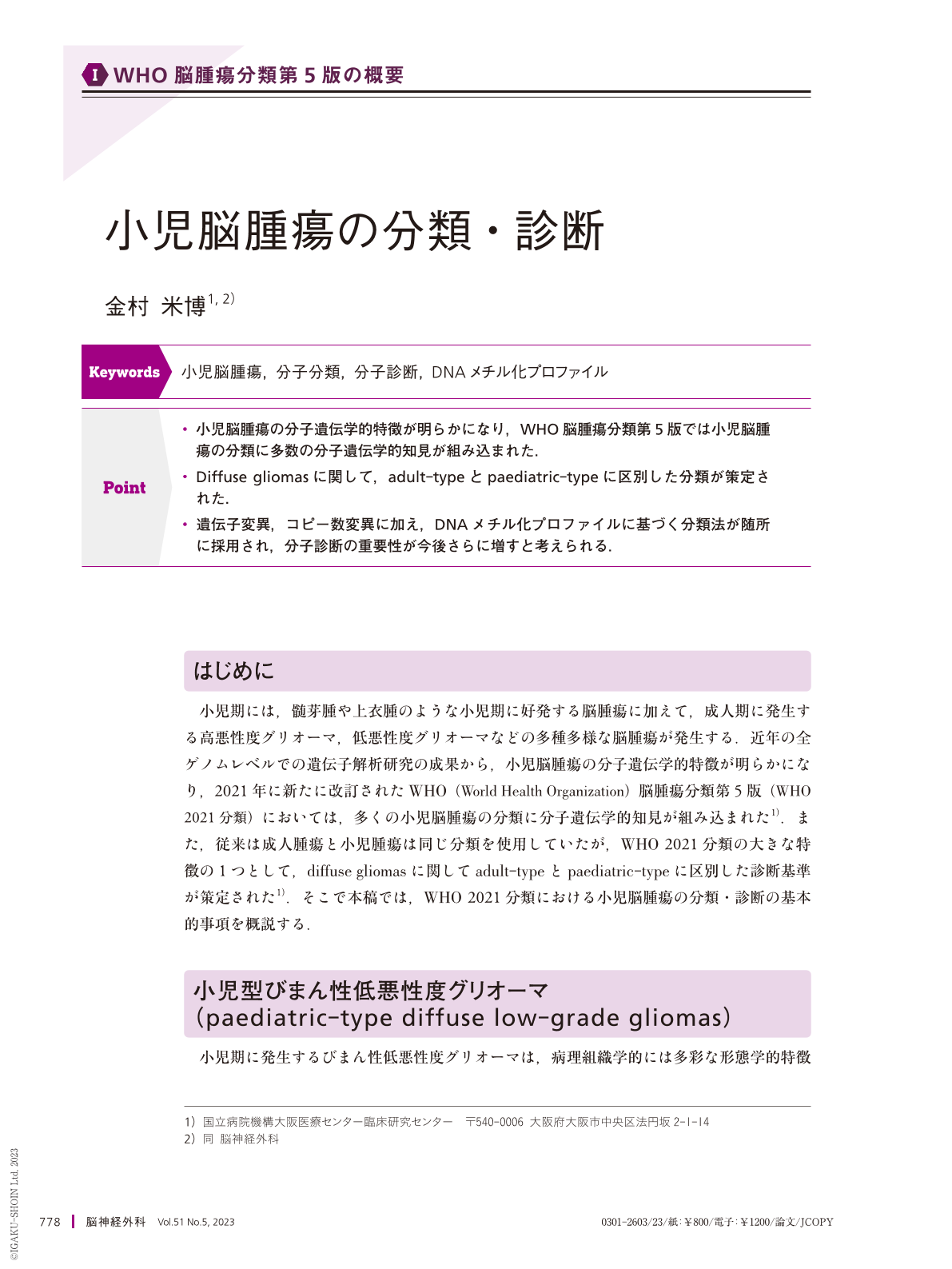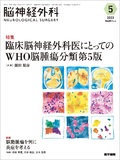Japanese
English
- 有料閲覧
- Abstract 文献概要
- 1ページ目 Look Inside
- 参考文献 Reference
Point
・小児脳腫瘍の分子遺伝学的特徴が明らかになり,WHO脳腫瘍分類第5版では小児脳腫瘍の分類に多数の分子遺伝学的知見が組み込まれた.
・Diffuse gliomasに関して,adult-typeとpaediatric-typeに区別した分類が策定された.
・遺伝子変異,コピー数変異に加え,DNAメチル化プロファイルに基づく分類法が随所に採用され,分子診断の重要性が今後さらに増すと考えられる.
In childhood and young adulthood, a wide variety of brain tumors, such as medulloblastoma and ependymoma, frequently occur. Moreover, high- or low-grade diffuse gliomas, commonly found in adults, also emerge. Recent genomic research has revealed numerous molecular and genetic features of pediatric brain tumors. These molecular and genetic findings have been incorporated into the latest 2021 World Health Organization Classification of Tumors of the Central Nervous System(WHO CNS 5). WHO CNS 5 introduces separate classifications for adult- and pediatric-type diffuse gliomas, which were conventionally diagnosed using the same criteria. Classifying these adult- and pediatric-type gliomas using histopathological properties alone is challenging. Therefore, molecular diagnostics utilizing diverse molecular and genetic information, including variants, copy number alterations, structural abnormalities, and DNA methylation profiles, are imperative. Many molecular and genetic characteristics have been elucidated in the WHO CNS 5. Molecular diagnostics and classification are essential for accurately categorizing pediatric brain tumors, and the significance of molecular and genetic information will continue to grow.

Copyright © 2023, Igaku-Shoin Ltd. All rights reserved.


